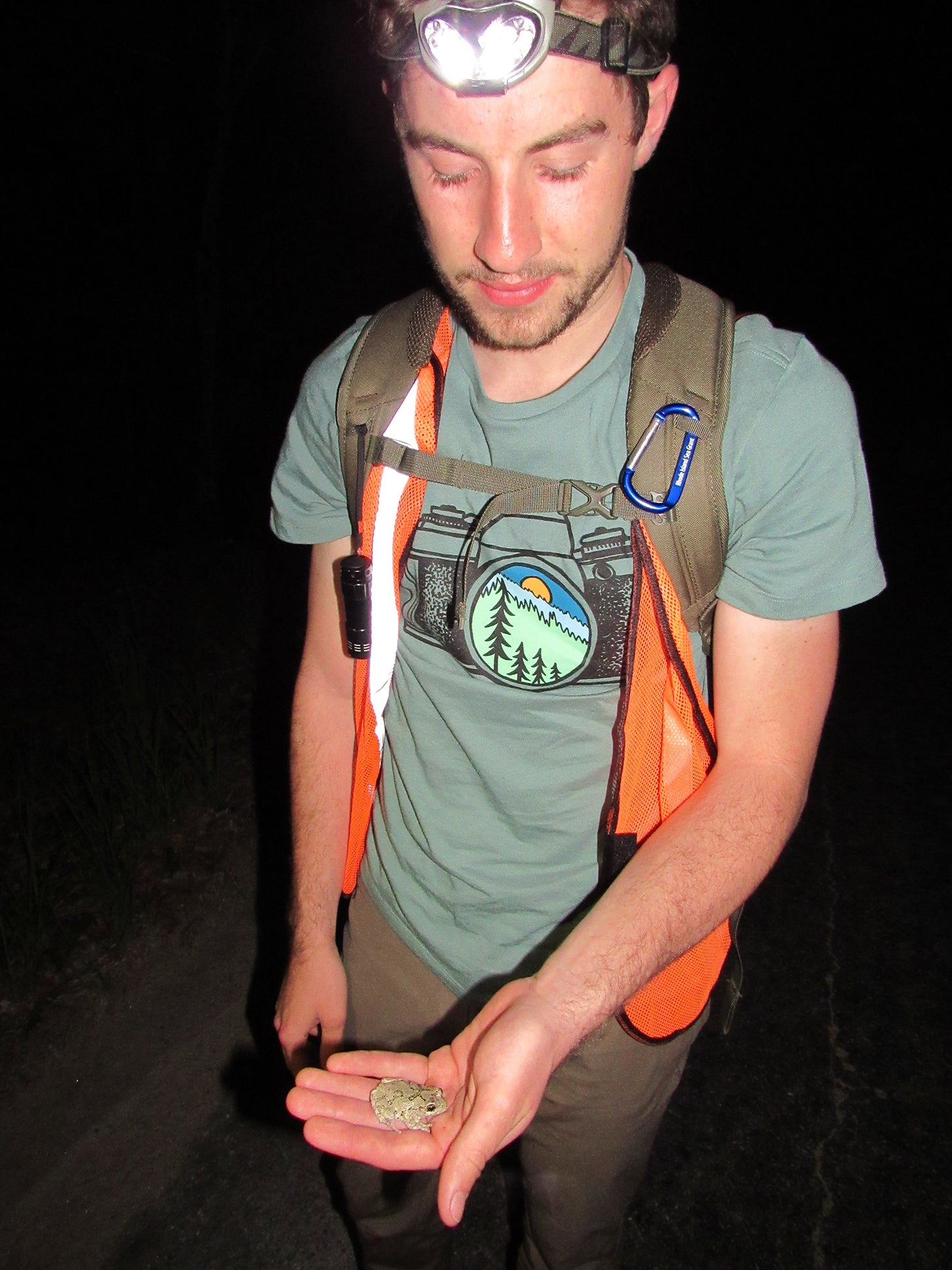KINGSTON, R.I. – May 14, 2019 – One of the leading causes of death for frogs, turtles and snakes is road mortality. A study in Denmark found that amphibians have a 34 to 61 percent chance of being struck when crossing a roadway, and slow-moving turtles in Florida had less than a 2 percent chance of surviving a road crossing.
It’s a serious issue for reptiles and amphibians in Rhode Island, too, and the Department of Environmental Management is beginning to plan strategies to mitigate the problem. But first, the agency wants to know the location of the hotspots of mortality.
That’s where University of Rhode Island graduate student Noah Hallisey comes in. He has created a computer model that factors in traffic volume, proximity to forests and wetlands, and distance to ponds and lakes to predict the likeliest locations of reptile and amphibian road mortality.
“It’s a growing problem,” said Hallisey, a native of Niantic, Connecticut. “The combination of increased development, increased traffic volume, and lots of wetland habitat adjacent to roads has made it very risky for reptiles and amphibians to move around.”
Hallisey’s approach to the problem is very different from what has been tried in other states. Instead of walking hundreds of miles of roads looking for the carcasses of road-killed frogs, snakes and turtles, he used geographic information systems to predict the hotspots. And now he and a crew of volunteers are visiting some of the sites his model predicted to validate its accuracy.
Most of the mortality hotspots he has identified are in western Rhode Island, he said, where more habitat and less development mean that reptiles and amphibians are in higher abundance and likely to be crossing roads. But he has identified hotspots in almost every community in the state.
“Mortality is highest in spring when the animals are traveling to their breeding locations,” Hallisey said, “and then again in the fall. For the amphibians, it mostly happens on rainy nights.”
So that’s when he and his survey crew are walking along the predicted hotspots in search of dead bodies. One night they found dead turtles and frogs of several species, as well as a few live salamanders in the process of crossing the road. The model validation surveys will continue until the end of June.
Once the model has been validated, he will conduct a statistical analysis to identify the factors that are most influential in predicting road mortality to improve the model’s predictive power. And then he will present his data to the Rhode Island Department of Environmental Management and Rhode Island Department of Transportation.
DEM herpetologist Scott Buchanan said the state is exploring the possibility of installing tunnels beneath some roadways – and drift fencing to divert reptiles and amphibians into the tunnels – to reduce mortality. Hallisey’s model will be used to identify priority locations for the first tunnels.
“It’s an expensive remedy, but it’s what we have to do if we’re going to protect some of our rarest reptiles and amphibians,” he said.

